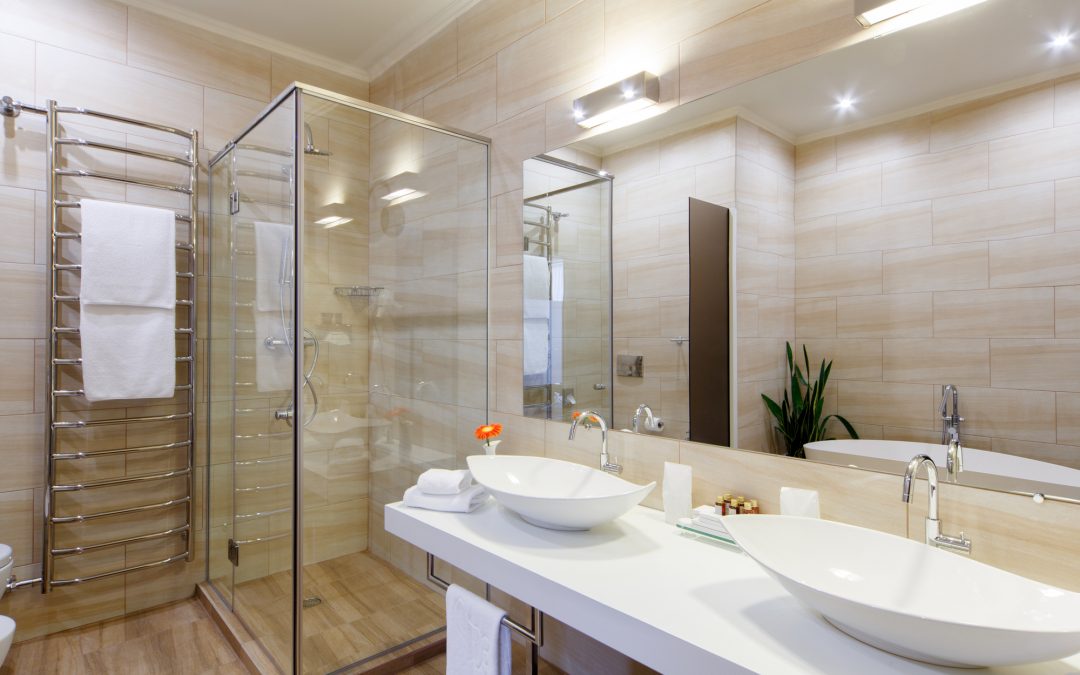Whether you’re buying or selling your home, getting a home inspection is a must to ensure the property is in good condition.
When you think about inspecting a property, the bathroom might not be the first place that comes to mind, but it’s actually a crucial part of the bigger picture.
Read on to discover what home inspectors are looking for when they check out the bathroom so you can be aware of potential red flags.
Leaks
Any time property undergoes a complete home inspection, the inspector should check for plumbing issues. This mostly includes finding any leaks or signs of water anywhere in the home. The same applies to the bathroom, where the home inspector should look for any indication of trouble.
While they’re inspecting the home, your inspector should look closely at all bathroom plumbing and fixtures. Signs of standing water, leaks, or previous water damage should be notated on the report. A leaky faucet should be addressed before you agree to purchase the home.
Aside from plumbing leaks, the inspector will also closely examine areas around the tub, shower, and toilet. Any water around the toilet and other areas can indicate problems with the fixtures that should be addressed.
The sink and toilet will be inspected to ensure that they’re installed tightly. Loose or wobbly sinks and toilets can cause leaks in the future. This can result in damage and other issues if it’s not corrected right away.
Along with signs of leaking, the home inspector will look for any evidence of mold. If there is mold present, it may mean that something else is going on behind the walls that should be taken care of.
Inspecting Bathroom Ventilation
Bathrooms should be properly vented to help lessen any negative effects due to moisture buildup. Most modern homes have a bathroom exhaust fan to help keep moisture to a minimum.
If the bathroom exhaust fan is not operable, the inspector should include this information on the report. The fan should lead to the exterior of the home, usually through a vent or pipe directly above it on the roof.
Most bathroom exhaust fans event through the roof, but they could vent out of a window in older homes. The roof option is ideal since venting moisture from a window is not the best situation during extreme hot or cold weather.
If you’re looking at an older home, it may not have an exhaust fan at all. In that case, the home inspector will check that there’s at least one operable window in the bathroom where excess moisture can escape.
Signs of too much condensation on walls or windows may be an indicator that there’s an issue with the bathroom’s ventilation. Visible streaks may be present on the walls, which is also an indication that there are condensation problems.
Flooring
Your home inspector will also pay close attention to the bathroom floors. If the floors feel soft when you walk on them, it could mean that there is a structural problem due to a water leak.
Moisture can easily gather under a bathroom floor without any visible standing water on top. That’s because most material used for bathroom flooring is water-resistant so you might not notice the problem right away.
While inspecting the bathroom, the inspector will also be on the lookout for any cracked or loose floor tiles. If the bathroom has laminate or wood flooring, they’ll be on the lookout for dark stains or evidence of warping.
If the floor feels like it’s “bouncing” when you walk on it, there may be water damage lurking underneath. The inspector should also check for any mold or mildew around baseboards and underneath the vanity.
All caulking around the tub, toilet, and shower should be in good condition and free of cracks. When grout or caulk is worn out, it can cause water to seep into the seams and affect the subfloor underneath.
Electrical Components
Whether it’s a bathroom remodel or an older home, what do home inspectors check when it comes to the electrical part of the bathroom? Wiring in any room where moisture is present should always have a ground fault circuit interrupter (GFCI) installed.
This special outlet offers protection from electric shock if it comes into contact with water. The GFCI includes a small button you can push to test the receptacle. You can also use this button to reset the outlet if it trips the breaker.
All bathrooms should have a GFCI receptacle installed. Without it, using items like a hairdryer can be dangerous and pose a serious threat to safety.
The inspector will look for this receptacle and should also check the breaker box. Your home should have either a GFCI outlet for the bathroom, a GFCI breaker in the panel, or both in order to be safe. This same principle should also apply to the kitchen since there is also moisture and water prevalent in this part of the home.
Inspect Your Bathrooms for a Safe Home
You might not think of inspecting the bathrooms as part of your comprehensive home inspection. Yet, it’s actually a crucial part of the process. Make sure you find out if there are any signs of leaks or problems with the exhaust vent right away.
With a thorough home inspection, you can feel confident that your bathroom is clean, safe, and dry.
To find out more about our services or to schedule an inspection, visit our website, or contact us today.

